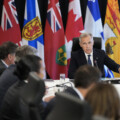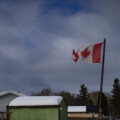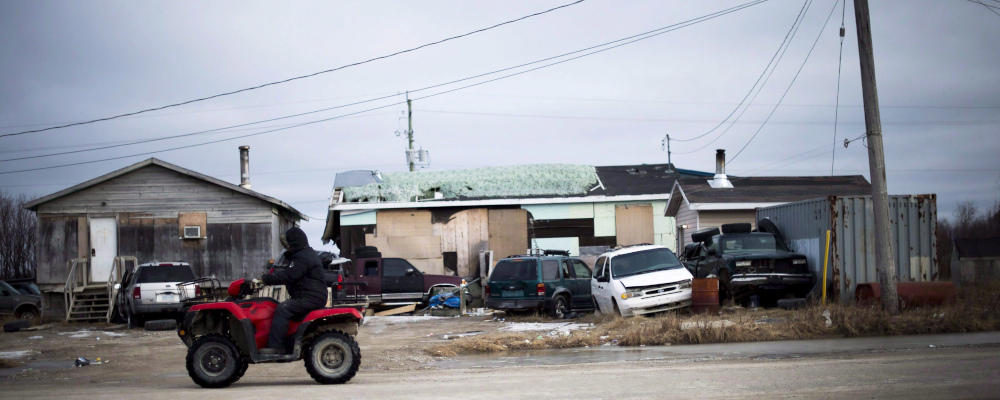I participated in an event this week hosted by the Canadian Parliamentary Centre on the subject of Canada’s urban-rural divide. The focus of the presentations and subsequent panel discussion was mostly on politics and how the country’s political map has come to be defined by place. The recent Alberta election results, which partly reflected divergent political preferences between Calgary, Edmonton, and the rest of the province, understandably loomed over our conversation.
But at the risk of sounding a bit Marxist, it’s impossible to understand Canada’s urban-rural divide and its socio-political consequences without accounting for the underlying role of the economy. Those concerned about a growing fault line between our major cities and the rest of the country must confront the economic forces at its core.
The good news is the U.S. experiment with Opportunity Zones, a new policy model to catalyse private investment in rural and economically-distressed communities, is producing promising results. It’s something that Canadian policymakers—particularly Conservative ones who disproportionately represent these communities—should be studying closely.
Let’s start by defining the problem. Canada’s economy has long been marked by a high concentration of economic activity, investment, and jobs in a small number of major cities. It isn’t a new issue or challenge per se. But in an era of so-called “superstar cities”, these trends have been far more pronounced.
The City of Toronto itself now accounts for one-fifth of the country’s economic activity. Adding just five other cities—Montreal, Vancouver, Calgary, Edmonton, and Ottawa-Gatineau—brings the total share to more than half of the national GDP. The U.S. comparison, by contrast, involves as many as the country’s 30 largest metropolitan areas to reach 50 percent of total economic activity.
The same goes for job creation. As Mirko Bibic, the president and CEO of Bell Canada, recently observed, in the five years prior to the COVID-19 pandemic, nearly two-thirds of net new jobs created in Canada were concentrated in Montreal, Toronto, and Vancouver. That share surpasses three-quarters if Ottawa-Gatineau, Calgary, and Edmonton are accounted for. Yet some rural and remote communities still haven’t even fully recovered the jobs that were lost during the 2008-09 global recession.
The key point here is that the socio-political dynamics—including signs of normative differences and conflicting political preferences—that are increasingly drawing attention from academics, business leaders, and policymakers are themselves rooted in divergent market outcomes. Put more simply: if you want to understand the urban-rural divide that’s shaping Canadian politics, you need to come to terms with the economic divide that undergirds it.
It’s important to emphasize here that urban agglomeration isn’t a case of markets malfunctioning. It’s a case of markets doing what markets do: which is to allocate scarce resources—including financial capital and human capital—efficiently.
Labour markets in cities like Toronto are screaming at the top of their lungs for workers and they’ve by and large been responding. Between 2016 and 2021, urban cities grew 16 times faster than rural areas. Immigration was a key driver. More than half of new immigrants settled in Montreal, Toronto, and Vancouver alone.
These market-driven trends have produced a lot of positive outcomes. Canada’s cities are frequently cited as among the most livable in the world. They’re dynamic, diverse, and generally productive. But they’re also relatively unequal, home to what’s been described as a “housing crisis”, and facing outmigration, particularly from young families.
Rural communities in broad terms face their own challenges, including population loss, a declining tax base, and a lack of investment and good jobs. The situation on First Nations reserves typically involves these issues as well as other unique complexities and problems.
These differing political economy experiences have generally come to manifest themselves in differing views about the state of the economy and even in some cases about the prospects for the future. The feedback loop between economic outcomes and political outlooks is complex but there’s reason to believe that there’s a strong interrelationship.
The upshot: Canada’s urban-rural divide is rooted in powerful market forces that are reflected in economic activity, job creation, migration patterns, and even politics.
If one accepts that these are primarily the result of market forces, then policymakers essentially have two choices: one is to mostly defer to markets and then redistribute the gains to rural and economically-distressed communities, and the second is to try to boost economic activity in these places.
The latter comes with risks. Any policy intervention is bound to create distortions. There’s always the strong potential for politicization. And, of course, if history is a guide, there’s an even higher probability that it will fail.
This is hardly the first call for regional economic development after all. The country’s history is marked by various attempts to catalyse investment and job creation on the periphery. Some have been spectacular failures. Others have produced middling results. Most have been unsuccessful for various reasons. A key one though is they typically haven’t just sought to nudge the market. They’ve essentially substituted government diktat for market forces altogether. They’ve taken the form of business subsidies, mega projects, direct government employment, and other big government approaches.

The Opportunity Zones model aims to learn these lessons. Enacted in the 2016 Tax Cuts and Jobs Act with bipartisan support, Opportunity Zones involve a series of tax inducements for investors (via Qualified Opportunity Zone Funds) to deploy private capital into rural and economically-distressed areas across the United States.
The key though is the policy model is relatively flexible and neutral. The only major condition for investors is that their investment must flow to one of about 8,600 designated zones. Investors are otherwise free to choose where and how to invest across a range of asset classes. In this sense, Opportunity Zones represent an economic development model that aims to strike a balance between a desired political economy goal and the inherent benefits of a decentralized market economy.
Opportunity Zones faced a lot of criticism early on. Much of which reflected common arguments about market interventions of any sort. It’s a fair debate that involves a combination of normative and prudential considerations.
Yet, as John Lettieri, the co-founder and president of the Economic Innovation Group, a U.S.-based think-tank that has championed Opportunity Zones, recently told us in an episode of Hub Dialogues, the model is working. The early results are quite impressive. Consider the following:
- Total Opportunity Zone investment totaled $48 billion by the end of 2020. This capital was raised from roughly 21,000 individual and 4,000 corporate investors and deployed into 7,800 Qualified Opportunity Funds.
- Nearly half of the designated zones have received Opportunity Zone investment.
- Investment has disproportionately flowed to the most economically-distressed communities—ranked from lowest to highest levels of need, they average in the 87th percentile for poverty, 81st for median household income, and 80th for unemployment.
Although it’s far too early to say definitively that Opportunity Zones have worked, there’s enough evidence that Canadian policymakers ought to take notice. They represent the most interesting and innovative policy idea to boost economic activity, investment, and job creation in rural and economically-distressed communities in some time.
Given the broadly similar economic and political conditions in Canada, there’s reason to think that the model could be imported into the Canadian context. Decisions about designating Opportunity Zones could similarly be pushed down to provincial governments. First Nations reserves and possibly the three Northern territories could automatically be deemed designated zones. Provincial and local governments could augment a federal framework with their own programs and policies. Opportunity Zones could be a national project rooted in the shared goals of growth, inclusion, and broad-based opportunity.
If policymakers are concerned about the growing urban-rural divide in our politics, they must confront the underlying divide in our economy. Opportunity Zones can help.
Recommended for You

The global liveability scores of Canada’s major cities are falling. What’s going on?

Sean Speer: Walking back the Liberals’ pharmacare plans would be a major broken promise—and the right thing for Carney to do

Need to Know: One positive of Pierre Poilievre losing his Ottawa seat

‘It’s an open question whether we are meaningfully a democracy’: Andrew Coyne on how Canada is falling short




